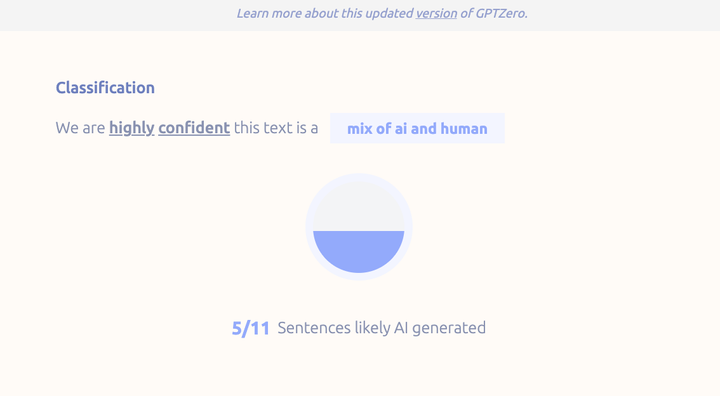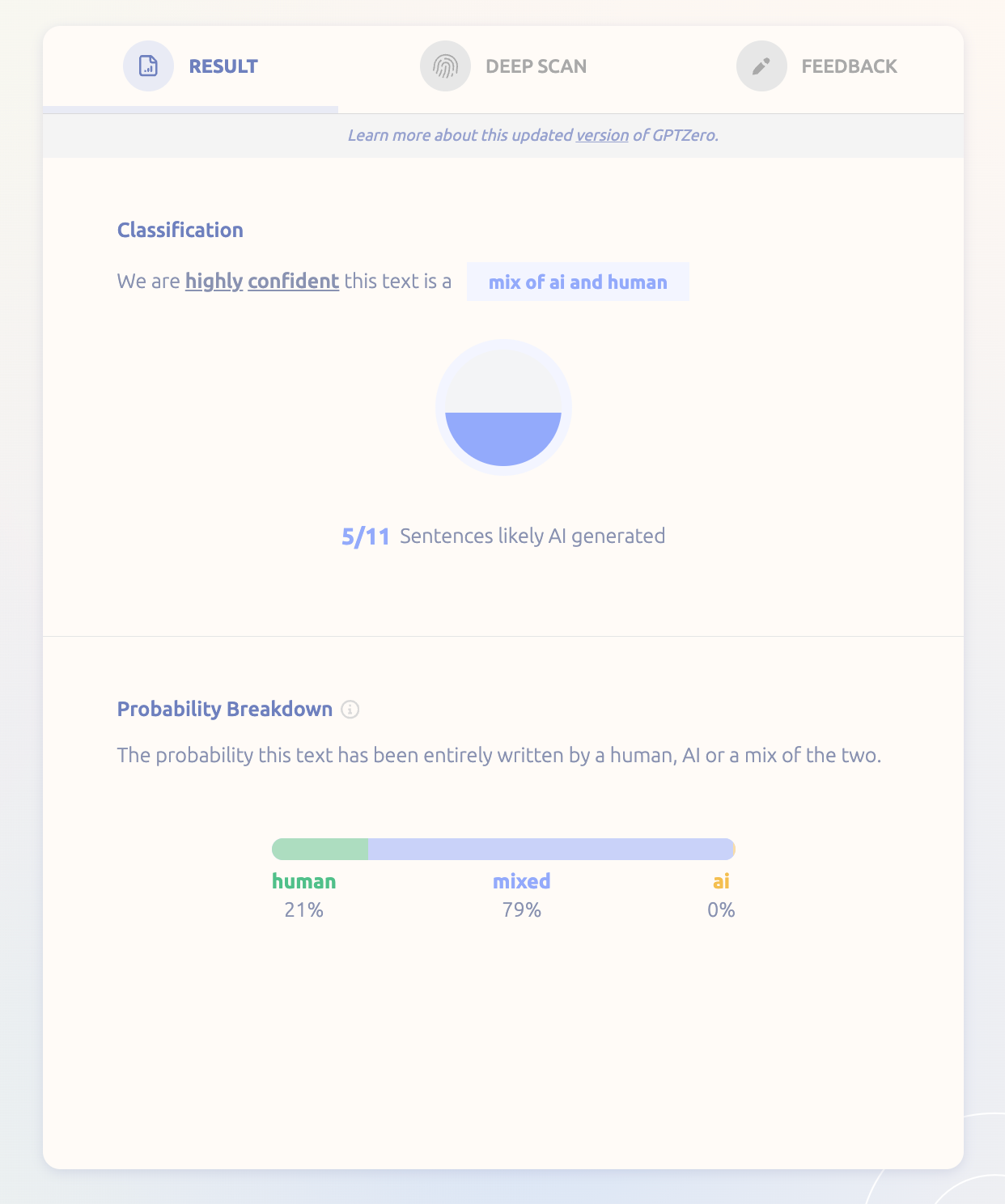AI Detection is No Longer Binary

During the initial phase of widespread AI adoption, the world became awash with copycats. With little understanding of hallucinations or how LLMs work, people copied and pasted directly from AI writing assistants and passed it off as their own work. This was a largely experimental phase, where AI was brand new and people were experimenting with the form.
We’re now entering a new phase of GPT usage. Writers, students, and users of AI writing assistants are growing more sophisticated than to simply “copy/paste” and call it original work. Teachers, editors, and evaluators are also not type-casting themselves into camps of pro or anti-AI, but want more nuanced evaluations on understanding how AI is used.
GPTZero is leading the next phase of AI writing understanding with more sophisticated AI recognition algorithms. That’s why we’re pleased to announce that GPTZero mixed detection model that precisely evaluates text that’s a blend of human writing and AI outputs.

How mixed evaluations increase confidence in AI detection
In the not too distant past, AI writing detection models could not acutely access AI writing from a “mixed” piece of writing; where text is a split of both human and AI writing.
But increasingly, the usage of AI writing assistants is more complex. Users are likely to use AI writing assistants as an aid, versus a complete stand-in for their own voice. There is a growing need for nuanced differentiation in text that’s a mix of AI and human elements.
In our research labs, we’ve been hard at work with this use case in mind. We’re proud of the work we’ve done to make GPTZero’s accuracy better in cases where a piece of text is a blend of human and AI writing. After data-driven scope changes and accuracy tweaks to our ML models, we can acutely distinguish the nuances between AI and human writing for this use case. GPTZero is the first organization in the sector to unlock this capability.
These changes have revolutionized GPTZero’s core product, giving a boost to our confidence scores, which are now higher across the board.
What are the implications of GPTZero’s new feature?
The new changes in GPTZero are a breakthrough in the AI/education space. Why does it matter?
We see these changes as a boost for academic integrity. An educator can know when a student’s work is genuinely their own, and be able to understand the ways in which they lean on AI writing assistants.
For those writers and leaders looking to maintain credibility and public trustworthiness, this feature is a stamp of authenticity. And for learners seeking to understand how heavily they rely on AI, this feature may uncover new insights.
We are most excited about this feature being incorporated into studies and research in the education space. as we seek to understand the ways in which AI writing assistants are used, how do humans naturally and organically balance their own voices with AI writing assistance? This is invaluable feedback and research for fine-tuning algorithms versus seeking to diminish or repress/overshadow them.
Final thoughts
This enhancement is only the beginning of the groundbreaking research we’re undertaking at GPTZero HQ.
